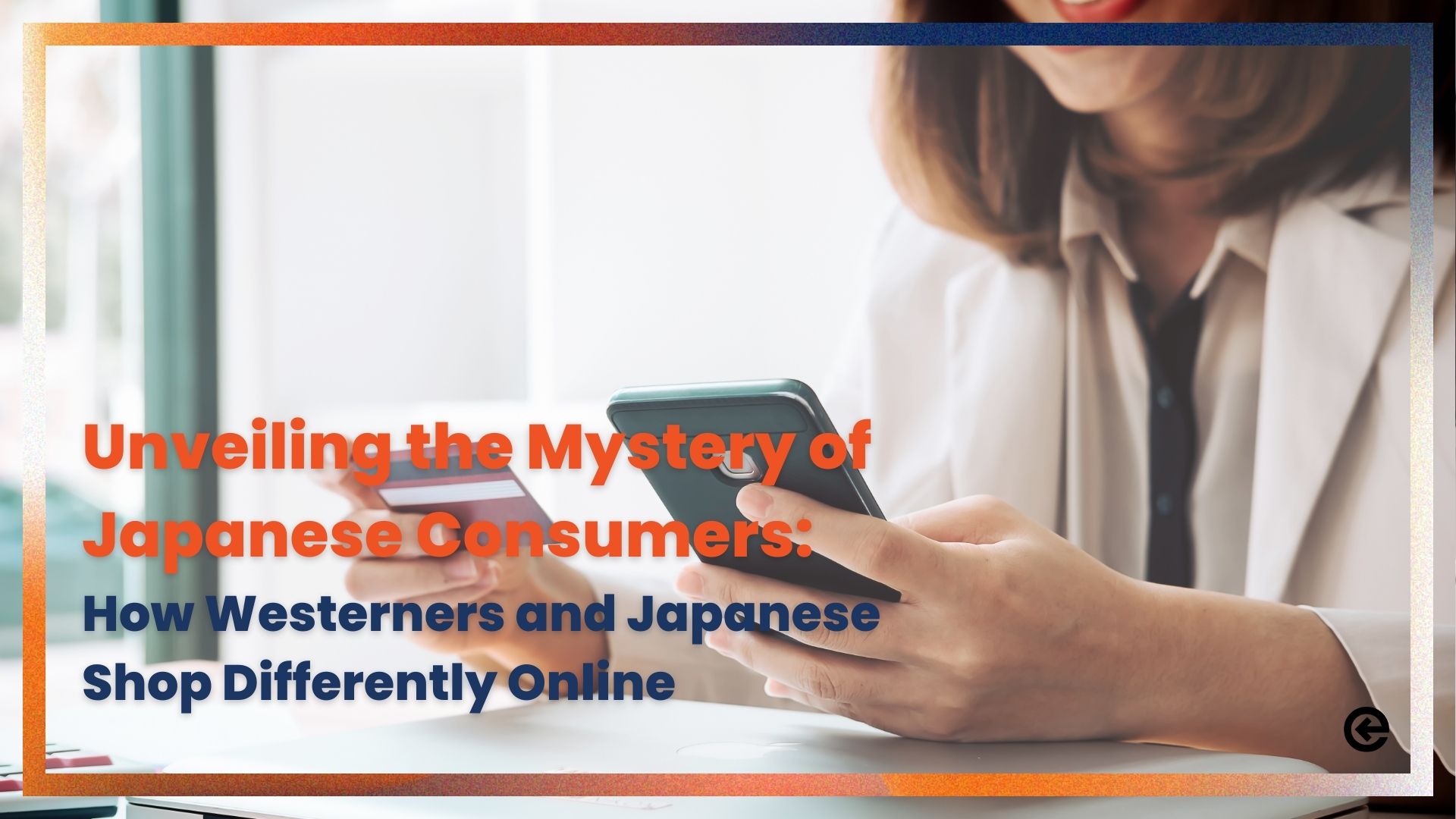How Westerners and Japanese Shop Differently Online
Entering the Japanese market successfully requires a deep understanding of its unique consumer behaviors and preferences. Unlike Western consumers, Japanese shoppers have different priorities and preferences when it comes to online shopping.
We’ll explore some key aspects for Japanese consumer behavior and provide insights to help you seamlessly navigate and thrive in the Japanese eCommerce landscape by comparing how Western and Japanese consumers shop differently.
Japanese Websites: Less English, More Text
Language Sensitivity
While a lot of western shoppers still prefer to shop in their native language, they are much more comfortable with English than most Japanese.
In Japan, over 70% of consumers say they will only buy from websites that are offered in Japanese. While you can use simple English on large commercial spaces like billboards and ads, most Japanese consumers will not buy from a website offered only in English.
English here is treated more as a stylish design element rather than a practical tool for selling products.

Additionally, poorly described or grammatically incorrect content can negatively affect consumer trust during the buying process. Many Japanese associate the translation accuracy with the quality of the product, meaning Japanese shoppers will often dismiss a product if they are not convinced of its quality.
To set yourself up for success, invest in professionally translated content for your website to effectively reach and engage your Japanese audience.
Text Heavy Websites
Western platforms aim to have more clean designs with a lot of white space and precise and clever language for product listings.
These product pages on the big eCommerce platform, Shopify, showcase this trend in the West.
Japanese consumers like to do a lot of research before making a purchase. This means having clear product descriptions and detailed delivery terms and options available is a standard in the Japanese market.
Japanese websites tend to be very text-heavy, featuring extensive product details and minimal white space. You can easily see this on Rakuten Ichiba, one of the biggest eCommerce marketplaces in Japan!
Don’t let the heavy text intimidate you; focus on providing the detailed information your customers need while maintaining an organized design customers can easily navigate through.
Collective Shopping Culture
In the West, individualism and standing out are embraced. Western shoppers are more willing to try new things and aren’t as afraid of purchasing from a brand that has earned a bit of a bad reputation.
American consumers tend to focus on “staying on trend” and engage in competitive consumption, which can lead to prioritizing quantity and visible consumption over quality. This is evident from the increasing popularity of bulk buying in America, especially since the COVID-19 pandemic.
On the flip side, Japanese consumers are extremely conscious of quality and are more sensitive to how purchasing from a certain brand affects their image. This leads them to prefer shopping from brands they trust.
Japanese consumers often favor fewer, high-quality items over numerous cheaper ones, placing great importance on the appearance, craftsmanship, and durability of products. One reason is that they often have less storage space compared to those in the US due to smaller apartment sizes, which also influences their purchasing habits.
So, how do they know if a brand is trustworthy in Japan?
Japanese consumers turn to online reviews, ratings, and even recommendations from friends.
This shopping behavior highlights the importance of not only providing high-quality products and services but also showcasing your brand’s reputation through positive reviews.
Many Rakuten Ichiba stores hold campaigns to collect reviews from their customers. If you’re a new brand entering Japan, working with an eCommerce professional can help you develop a customized strategy to entice customers to leave reviews and build your reputation in this market.
Make it Mobile Friendly
It goes without saying the majority of consumers nowadays enjoy the convenience of shopping from their phone. Most western shoppers still browse on their phones, but they like to switch to desktop computers and laptops to handle the checkout process.
As for Japanese consumers, they mostly spend their online hours on their phone.
Many Japanese eCommerce websites and apps are optimized for mobile use, offering a smooth shopping experience.

Additionally, the convenience of mobile payments and the ability to shop on the go encourage Japanese consumers to prefer mobile shopping over desktop browsing. This means your store needs to be highly mobile-friendly.
Optimizing your site to make sure the customer journey is seamless will set you up for success in this market.
Japan, as part of the Asia-Pacific (APAC) region, has one of the highest cart abandonment rates globally, at about 76.3%.
Ensuring your check-out process is clear and mobile-friendly can help you attain customers until the sale is made.
Most eCommerce sites that are available in Japan are optimized for mobile shopping and check-outs. But if you’re bringing your own site to Japan, it would be a good idea to dig into the market and adopt it to the consumer preference in Japan.
Key Takeaways
Japanese consumer culture is built on trust. For your brand to succeed in this unique market where consumers behave more collectively than the West, you want to put your best foot forward, especially when you first enter.
It’s important to incorporate the diverse payment options Japanese customers are accustomed to. Ensure your site is mobile-friendly to cater to local preferences. Tailoring your approach to these needs will help build a strong brand presence and achieve success.
COVUE has experts in Japan eCommerce and marketing who understand behaviors and trends of Japanese consumers.


